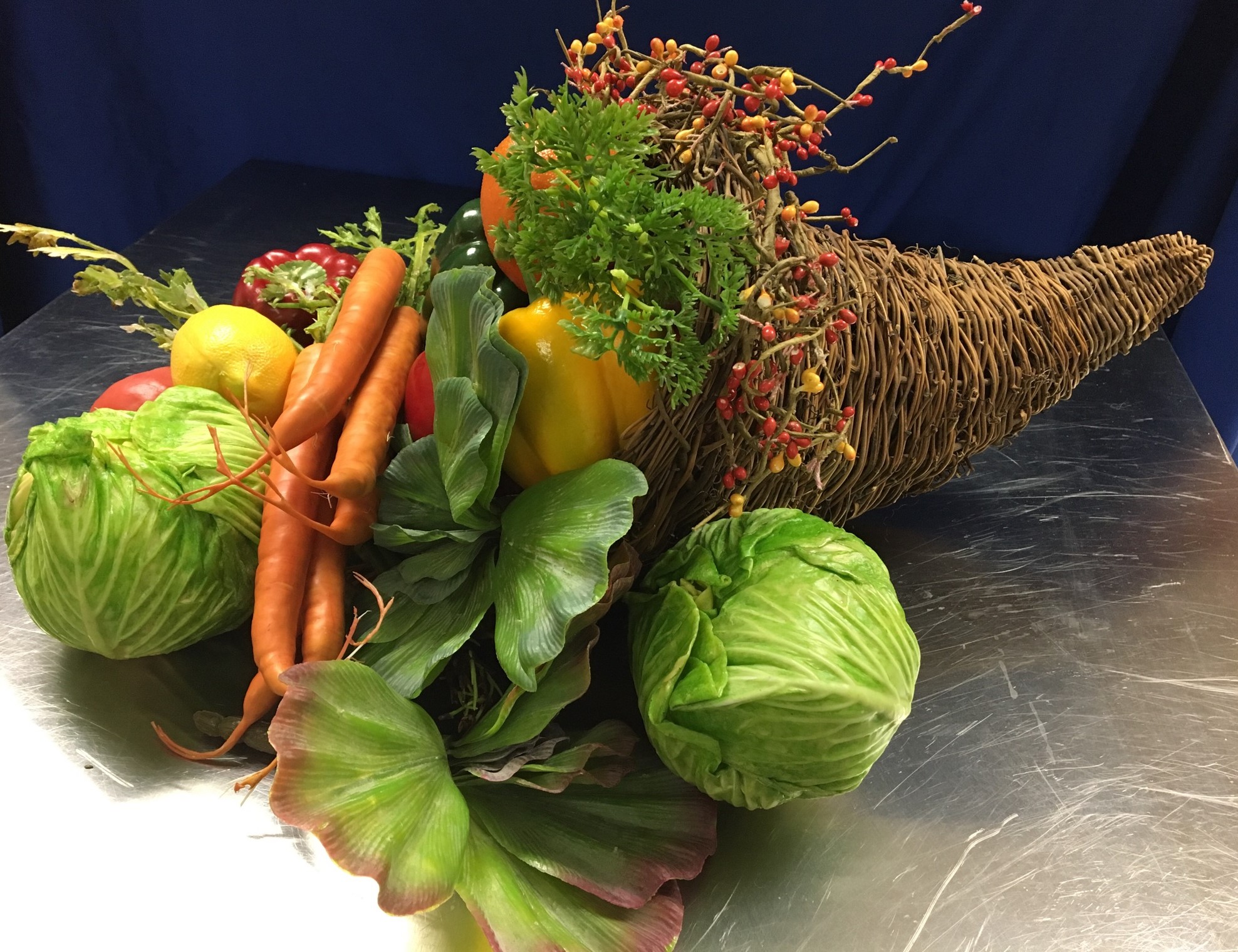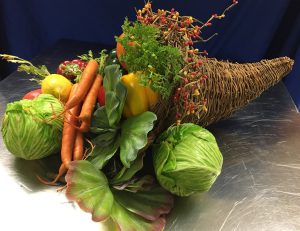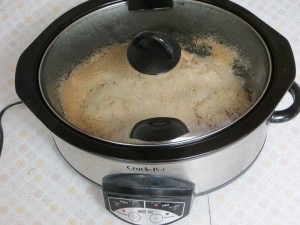
Thanksgiving is Around the Corner!
 With Thanksgiving around the corner, it is only fitting to display a cornucopia. Not only is this horn of plenty a universal symbol of abundance, it is truly timely! Florida is plentiful with fresh produce this time of year. According to the Florida Department of Agriculture and Consumer Services (FDACS), avocados, bell peppers, carambola, cucumbers, eggplant, grapefruit, guava, mushrooms, oranges, passion fruit, peanuts, radishes, snap beans, squash, strawberries, sweet corn, tangerines, and tomatoes are in season now.
With Thanksgiving around the corner, it is only fitting to display a cornucopia. Not only is this horn of plenty a universal symbol of abundance, it is truly timely! Florida is plentiful with fresh produce this time of year. According to the Florida Department of Agriculture and Consumer Services (FDACS), avocados, bell peppers, carambola, cucumbers, eggplant, grapefruit, guava, mushrooms, oranges, passion fruit, peanuts, radishes, snap beans, squash, strawberries, sweet corn, tangerines, and tomatoes are in season now.
Locally, Red Hills Small Farm Alliance boasts an even greater array of foods grown within our community. Local growers are producing vegetables, as well as fresh herbs, fruits, and nuts! Foods growing in the community include arugula, Asian greens, eggplants, baby Pac Choi, kale, butter lettuce, watercress, elephant garlic, peppers (aji dulce, datil, habanero, banana, and serrano), salad turnips, mustard greens, okra, sweet potatoes, persimmons, Meyer lemons, satsuma/tangerines, ponderosa lemons, and herbs such as African blue basil, apple mint, ginger, oregano, garlic chives, lemon balm mint, and rosemary. Plus, the trees are full and American chestnuts and pecans have started falling in Monticello! It is a great year for local produce!
With the abundance of fresh seasonal produce available locally, it is easy peasy to build a healthy plate. MyPlate, the illustration of the five food groups that are the building blocks for a healthy diet, encourages the consumption of a variety of fruits and vegetables every day. In general, 1 cup of raw or cooked vegetables or vegetable juice or 2 cups of raw leafy greens can be considered as one serving from the Vegetable Group. Any vegetable or 100% vegetable juice counts as a member of the Vegetable Group. Vegetables may be raw or cooked, fresh, frozen, canned, or dried/dehydrated, and may be eaten whole, cut-up, or mashed.
Based on their nutrient content, vegetables are organized into 5 subgroups: dark-green vegetables, starchy vegetables, red and orange vegetables, beans and peas, and other vegetables.
Similarly, fruit is a building block, too. Overall, 1 cup of fruit or 100% fruit juice, or ½ cup of dried fruit can be considered as one serving from the MyPlate Fruit Group.
Plus, ½ ounce of nuts or seeds can be considered as a one ounce-equivalent from the Protein portion of MyPlate.
Alice Henneman, MS RDN, Extension Educator with the University of Nebraska Lincoln, suggests an easy way to incorporate a wide variety of vegetables into a daily diet is by making a casserole from what you have on hand (and even add a few nuts for depth of flavor). Why not delve into the Florida Fresh horn of plenty and whip up something good this month? Don’t forget to eat your fruit for dessert!
“Make-Your-Own” Casserole
Makes 6 servings
General Directions:
Select food(s) from each category or use your own favorites. Combine in a buttered 2 to 2 1/2 quart casserole dish. Cover and bake at 350 F for about 50 minutes to 1 hour or microwave using 50% power for about 15 to 30 minutes, rotating or stirring as necessary. Heat until steaming hot (165 F) throughout.
Starch: select ONE:
- 4 cups noodles or pasta cooked
- 2 cups cooked long-grain white or brown rice (or other grain)
Protein: select ONE:
- 2 cups cooked ground meat
- 2 cups cooked and diced chicken, turkey, ham, beef, or pork
- 2 cups chopped hard-cooked egg
- 2 cups fish or seafood, flaked (you can use canned)
- 2 cups cooked or canned beans (kidney, etc.)
Vegetable: select ONE or add a variety:
- 1 (10-oz.) package thawed and drained frozen spinach, broccoli, green beans, or green peas
- 1 16-oz. can green beans, peas, carrots, or corn
- 2 cups sliced fresh zucchini, bell peppers, mushrooms, snap beans, squash, sweet corn, or tomatoes
Sauce – select ONE:
- 2 cups white sauce or 1 can sauce-type soup (mushroom, celery, cheese, tomato, etc.) mixed with milk to make 2 cups
- 1 16-oz can diced tomatoes with juice
Flavor: select ONE or MORE:
- 1/2 cup chopped celery, 1/4 cup chopped onion, 1/4 cup sliced black olives
- 1 – 2 teaspoons mixed dried leaf herbs (basil, thyme, marjoram, savory)
- Fresh Garlic to taste
- Salt and pepper to taste
Topping – select ONE or MORE:
If desired, after heating, place on top:
- 2 tablespoons grated Parmesan cheese
- 1/4 cup shredded Swiss, Cheddar, or Monterey Jack cheese
- 1/4 cup buttered bread crumbs
- 1/4 to 1/2 cup canned fried onion rings
Return casserole with topping(s), uncovered, to oven for about 10 minutes or to microwave for about 2 minutes.

